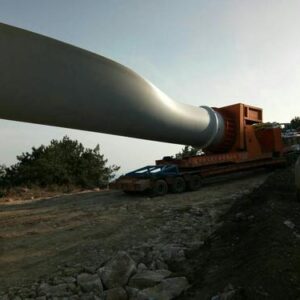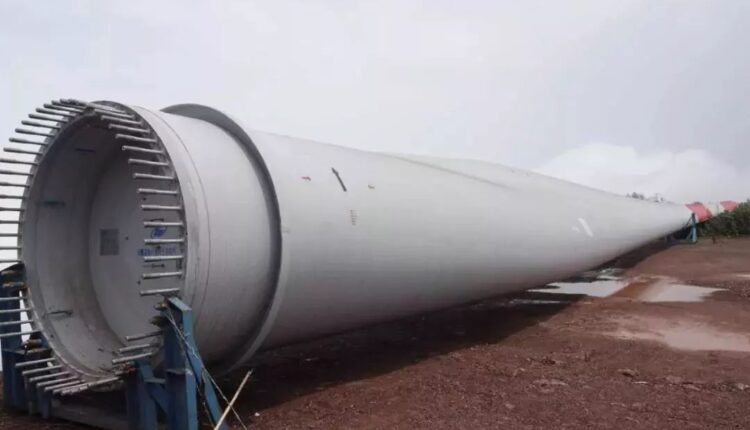The challenge with discarding old wind turbine blades is that they cannot be recycled, Although wind power is considered to be one of the cleanest energy sources, as wind power becomes the energy source of choice, it will still face many challenges in waste management.
The research results of the University of Strathclyde show that the global old wind turbine blades waste will increase from about 400,000 tons every six months in 2030 to about 2 million tons in 2050. Therefore, recyclability and the amount of recycling have become increasingly important in the construction process. In many cases, improving durability and reducing weight will also make GRP a more sustainable solution in the long term.
Where do discarded old wind turbine blades go?

Old wind turbine blades are made of durable materials that can withstand the abrasion caused by hurricanes and weather, time and rainfall. The average wind turbine blade is 50 meters long. In order to discard them, they must be cut into smaller pieces and loaded into the back of a tractor trailer before being transported to a landfill.
Wind power is carbon-free, and approximately 85% of turbine components (including steel, copper wire, electronic equipment and gear units) can be recycled or reused. But fiberglass blades are the most difficult material to reuse and recycle. Heavy trucks can only load one blade at a time, which makes transportation costs another obstacle in the process. Scientists are trying to find a better way to separate the resin from the fiber so that the waste of old wind turbine blades can be reused.
According to plans developed by Aker Offshore Wind Power, Aker Horizons and the University of Strathclyde, discarded old wind turbine blades can be recycled and reused.
Aker Offshore Wind Power, Aker Horizons and the University of Strathclyde have signed a memorandum of understanding to promote the development of a process for the recycling and reuse of used glass fibers “old wind turbine blades”, including those provided by the University of Strathclyde A new process developed.
Around the world, glass fiber reinforced polymer composites (GRP) used in wind turbine blades are considered a source of pollution that is difficult to decompose. Today, almost all thermoset GRP waste produced in the UK and Europe goes to landfills. Or extract energy from waste.
By the middle of 2030, with the end of the service life of wind turbine blades, the amount of GRP waste will increase significantly, and it is likely to become the main source of GRP waste in the UK.
“Industrial waste is a challenge for most industries. By cooperating with the University of Strathclyde, we have the opportunity to further develop new solutions to solve increasingly serious problems.” Strathclyde Dr. Liu Yang, head of the Advanced Composites Group, said, “This is not only a challenge for the wind power industry, but also a challenge for all industries that rely on GRP materials for production. Retaining and redistributing the energy contained in the fiber is a more sustainable way for us. The key to a circular economy.”
new technology
According to the memorandum of understanding, the partners will expand the scale and commercialize a unique process developed in the laboratory by the University of Strathclyde, which can heat recovery and post-treatment of glass fibers from GRP waste , To obtain glass fiber close to the quality of virgin material.
Utilizing decades of industrial innovation and new production technologies, Aker Horizons and Aker Offshore Wind Power Company provide funding and related capabilities to apply this solution to the industrial sector. In addition, the extensive chemical processing and carbon capture expertise within the wider Aker Group will also ensure the safety and sustainability of industrialization.
The GRP Recycling process of old wind turbine blades developed by the Department of Mechanical and Aeronautical Engineering of the University of Strathclyde can convert composite waste into reusable fiber-reinforced materials. If this process is implemented on a global scale, 50% of the global glass fiber demand can be met. Because this process can produce medium- and high-value fibers, it can cover a wide range of markets, from products with lower requirements to high-performance products.

